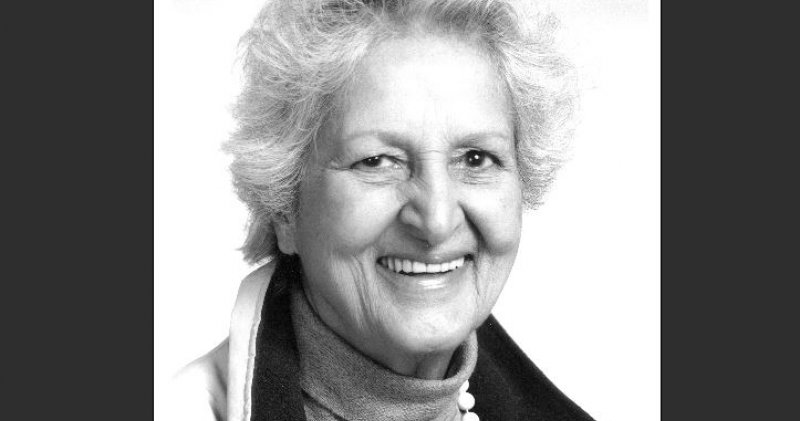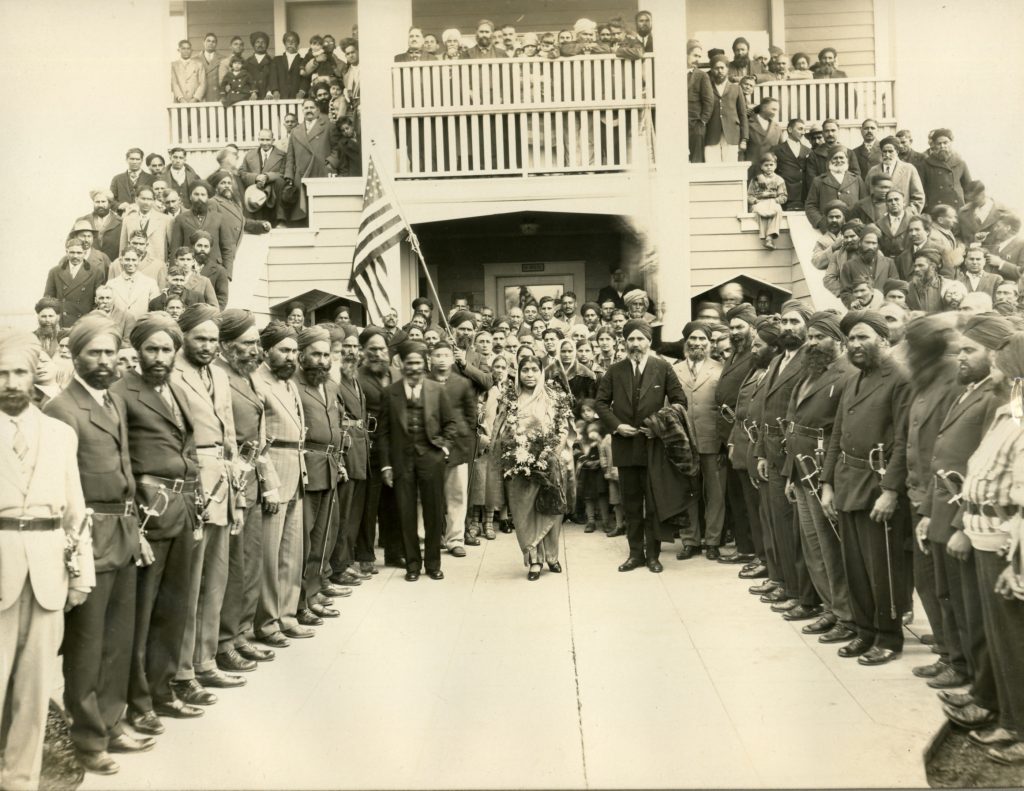Turn of the 20th Century - 1900s U.S.
A nation roaring with westward expansion and industrialization, hungry for labor to fuel its lumber mills and vast agricultural lands.
This was the siren call that drew many Punjabi men across oceans, seeking opportunity where their homeland offered none. Gathered in groups and opportunities, the first Punjabi men arrived in the states, dominating as farmers in California.
But what of the women?
The stories, legacies, and work of Punjabi women, especially in the United States, were ones often confined to the domestic sphere or rendered invisible by societal biases. But the faults of the past should not be the scars we carry into the present. The histories covered by the dust of 20th century prejudices are the ones we must now recover.
ਰਤਨ ਕੌਰ (Rattan Kaur: The First Punjabi Sikh Woman in America)
Solitude by Law
- The Asian Exclusion Act of 1917 forced Punjabi immigrants into impossible choices: stay in the U.S. indefinitely and live without wives or family, or return home—only to be barred from ever setting foot on American soil again. Citizenship was legally inaccessible. Family reunification was criminalized. The result was a life sentence of labor and isolation, a system designed to erase roots before they could grow.
The Only One
- Between 1916 and 1922, in Astoria, Oregon, Rattan Kaur stood alone—the only Punjabi woman in the region. While some might call her presence fortunate, it was a fortune wrapped in loneliness. There was no community, no aunties to lean on, no sisters to share the burdens of migration. It was her, eight children, and silence.
- Surrounded by predominantly European neighbors, her darker complexion, scar-lined scalp, and distinct identity marked her as visibly foreign. There was no welcome party—only distance. And yet, she remained.
Nomads on Their Own Land
- Her family moved from farm to farm across the American West, not for adventure, but necessity. Racist land ownership laws like the Alien Land Law of 1923 stripped Asian immigrants of the right to own property, forcing them into perpetual motion—rootless in a country they helped build.
- These policies weren't just legal—they were psychological warfare, designed to keep Punjabi families landless, powerless, and constantly in flux. It worked, yet Rattan endured.
Quiet Resistance
- In the face of upheaval, she ensured perfect school attendance for her children—an act of silent defiance in a world that wanted them uneducated, invisible, forgotten.
- She carried with her a photograph of her ancestors—the ਕੂਕਾ ਸਿੱਖ (Kuka Sikhs)—freedom fighters executed by the British. That image was more than memory; it was a lineage of rebellion and refusal to submit.
Love, Unspoken
- Her parenting was strict, at times verbally harsh, even violent—a product of pressure, trauma, and fear. But beneath that austerity, she drew a hard line: her daughters would never be married off without consent. "We came to this country to give our children an education," she told them.
- She upheld tradition, but within it, carved space for liberation. One of her daughters would choose her own partner—something rare, something radical.
Legacy of Resistance
- Both Rattan Kaur and her husband were active in the Stockton Gurdwara and the ਗ਼ਦਰ ਪਾਰਟੀ (Ghadar Party), embedding anti-colonial struggle into the daily rhythm of family life.
- But what exactly is the Ghadar Party? The Ghadar Party, born in Astoria, Oregon, in 1913, was not just a political movement; it was the collective roar of a people yearning for liberation. Its singular, unwavering purpose was to "free India from foreign rule". It established a weekly newspaper, published bravely in Hindi, Punjabi, and Urdu, quickly becoming "the voice of expatriates from India". This was an international movement in the 1900s, and, notably, it wasn't merely a men's movement. Yes, Rattan Kaurs's husband, Bakhshish Singh Dhillon, was "deeply involved in the Ghadar movement", a leader in lumber industry strikes. But let us not forget the profound influence of women like Rattan Kaur. She instilled in her children the deep-seated legacy of resistance, proudly displaying a picture of her ancestors, the Kuka Sikhs, who were "blown to bits for their rebellion" by British soldiers. For Rattan Kaur, the Ghadar movement was not abstract politics; it was a continuation of her family's "historical commitment to fighting against injustice".
The End, Quiet and Unseen
- Rattan Kaur died in 1932 at the age of forty-one following surgery to remove a tumor "the size of a melon." Her fears of medical neglect weren't unfounded—she had seen another Indian patient die under the same doctor's care.
- Her surgery was paid for with chickens, eggs, and vegetables—a final gesture that underscored the way she had always lived: off the grid, unrecognized, self-reliant.
- At her death, her sixteen-year-old daughter was left to navigate a hostile country alone. Her absence left a silence deeper than her presence ever allowed.
Rattan Kaur's life remains undocumented in official records. But in these fragments—labor, migration, sacrifice, love—we see the architecture of early Punjabi American womanhood. A foundation not built in ink, but in sweat, soil, and memory.

Rattan Kaur, early 1920s

Anti-colonial materials circulated by the Ghadar Party

Stockton Gurdwara, center of community & resistance
ਕਰਤਾਰ ਕੌਰ ਢਿੱਲੋਂ (Kartar Kaur Dhillion)
Born in 1915 to revolutionaries of the Ghadar Party, Kartar Kaur Dhillon came into the world already steeped in resistance. The daughter of Rattan Kaur, she would grow into one of the first Punjabi American women to speak, write, and organize not only for Indian independence, but also for Black, Latinx, and labor rights in the United States. Her activism spanned decades and solidarities—across race, class, and empire.
Unlike her mother, whose labor remained largely undocumented, this woman wrote herself into history. With pen, protest, and unshakable conviction, she refused the silence that defined so many immigrant daughters. She the bridge between generations of Punjabis, a voice carved from absence, and the daughter of Rattan Kaur and Bakshish Singh Dhillon.
She is Kartar Kaur Dhillion.
Kartar Kaur Dhillion
Unsung Activist, Writer, and Cultural Guardian
- Kartar herself carried the torch lit by her mother, becoming an "activist and writer, involved with India's freedom struggle". Her brother, Bud, at just 12, volunteered for India's freedom mission. Later, women like Nand Kaur, matriarch of Yuba City's Punjabi Sikh community, kept the flame alive by teaching Ghadar songs to her children, connecting them to their homeland and easing the pervasive isolation. In the religious revival that swept Yuba City after the Immigration Act of 1965, women were pivotal. Swarn Kaur Johl, an "Amritdhari Sikh well-versed in Guru Granth Sahib," started prayer groups and was instrumental in the gurdwara's operations, even stitching the first Nishan Sahib. And what a sight it must have been when, during the first Nagar Kirtan in Yuba City in 1980, the Sikh women, many of whom had arrived in the 1950s and 60s, "played an especially visible role," proudly representing their faith and community in public for the first time. They marched with "their Maharaj (the Sikh scripture)," a beautiful, defiant display of faith and freedom in a land that had once scorned them. Their efforts were not just for themselves, but for their heritage, their community, and the global struggle for justice.